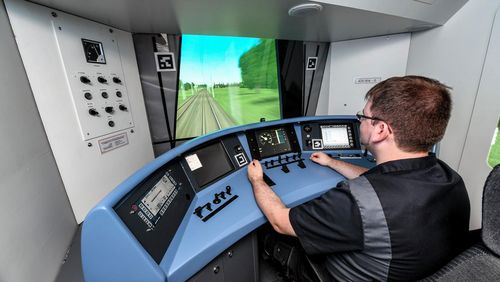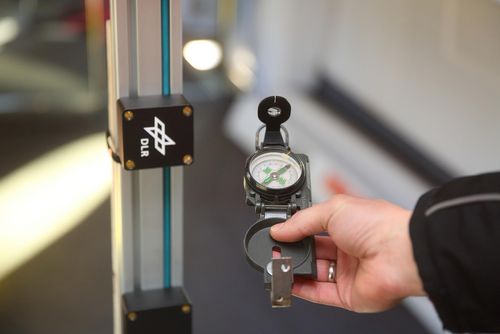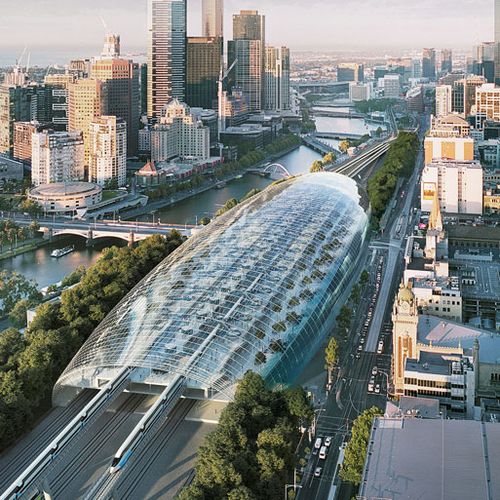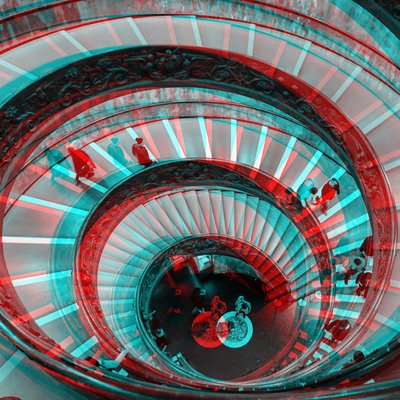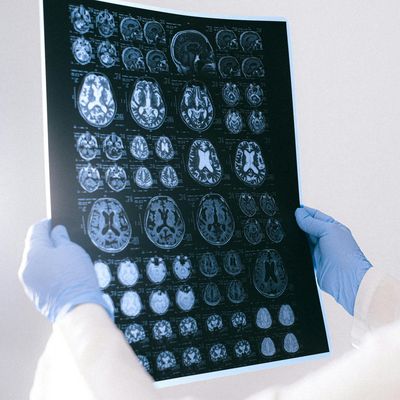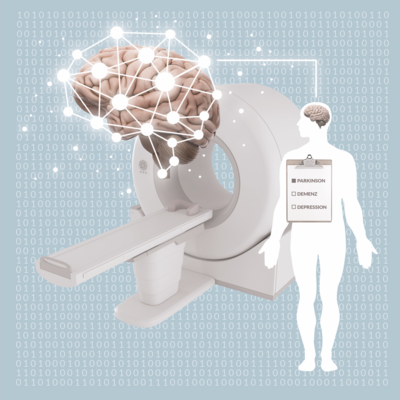Rail transport - digitally transfomed
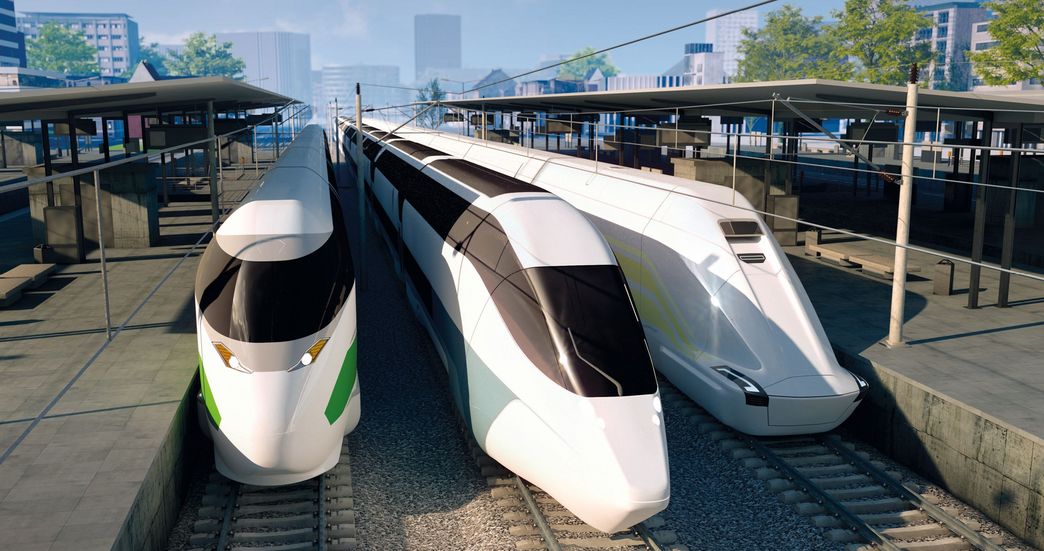
Rail transport is facing a new challenge – making an intense breakthrough into the world of digitalisation and automation. DLR’s transport research experts are in no doubt about it: something, in fact, quite a lot, is happening on the railways - and with the help of AI and data science.
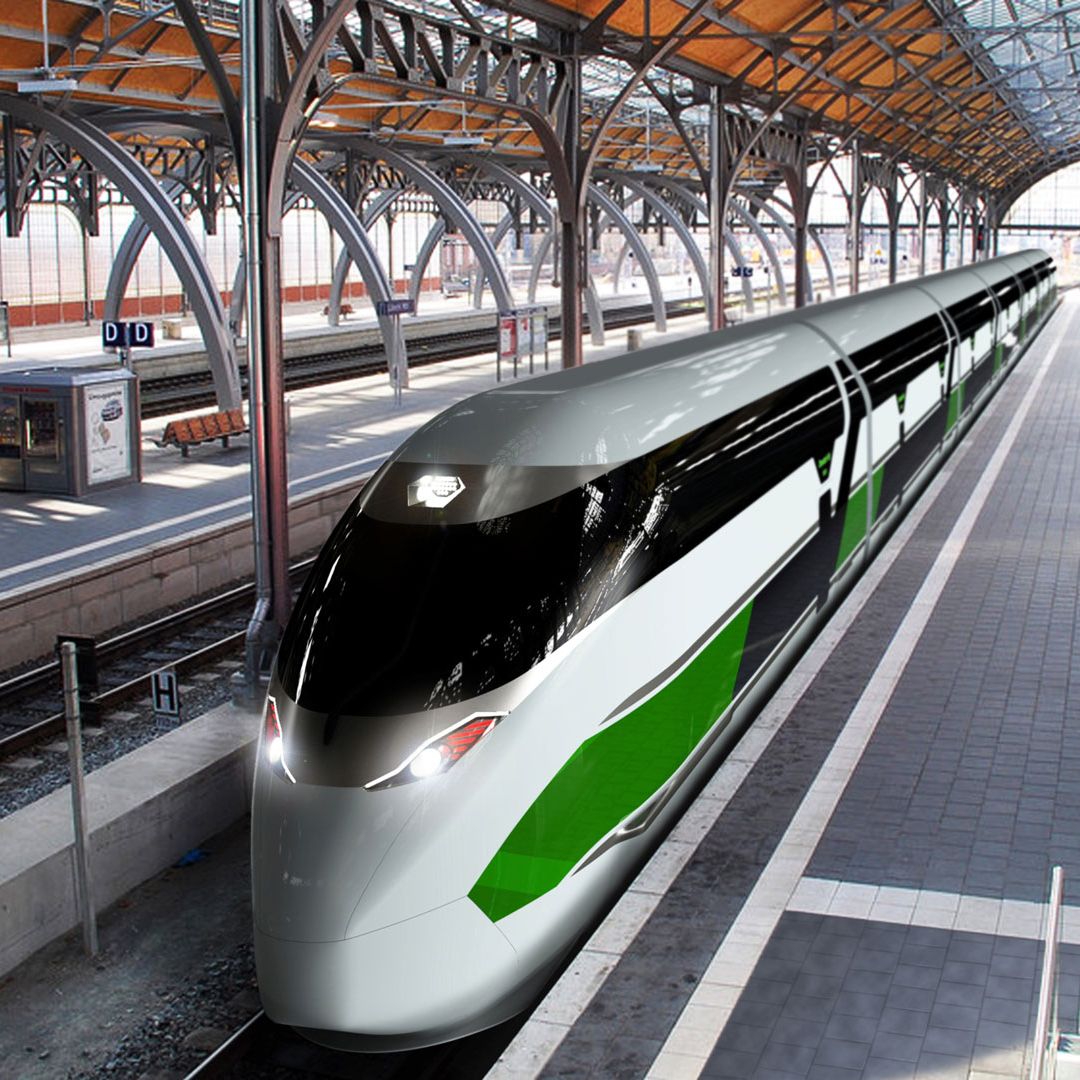
A new family of trains
A new family of trains
In the "Next Generation Train" project, DLR scientists are developing new concepts for future rail transport, including a new system of different trains for passenger and freight transport. In addition to the NGT-Cargo, which handles freight traffic, there is also to be a high-speed train, the NGT-HST, which will quickly and safely link passenger traffic via hubs. The NGT-Link could act as a feeder train in the future (see below).
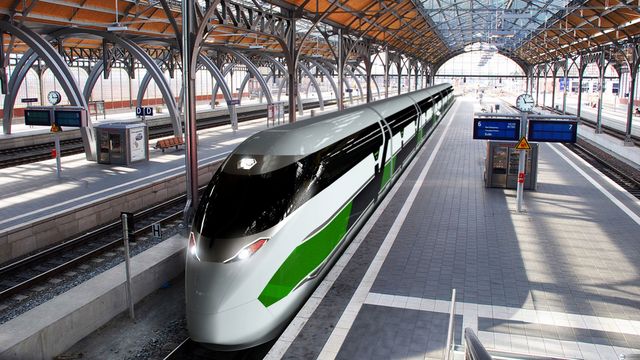
Automation, new communications technologies and standards, and the use of machine learning and artificial intelligence have the potential to make rail transport much more appealing and competitive. They pave the way for significantly higher route capacity and greater efficiency overall. At the same time, they promise reduced energy consumption and increased safety, punctuality and comfort. The need for future-oriented technologies and innovative solutions for tomorrow’s railways is considerable: “State-of-the-art, climate friendly rail transport is playing a key role in the transport transition,” says Karsten Lemmer, DLR Executive Board Member responsible for Innovation, Transfer and Research Infrastructure. “The volume of passenger and freight traffic is set to keep on growing all over the world. The demand for mobility that is as climate neutral as possible will grow at the same time. More intensive use of rail transport can be an important part of the solution.”
Automated rail operations and the human factor
In road transport, automated and networked driving is an important trend and a driver of innovation. Driverless underground trains and metro services already operate in many European cities. In Australia, automated freight trains transport iron ore from the outback to ports on the coast. So, in some areas, rail transport is a true pioneer of automation. However, it is difficult to transfer this to the entire rail network. The fact that high-speed trains share large parts of their route network with much slower passenger and freight trains complicates the implementation of automated and networked railway operations. In addition to technology, people will thus continue to play an important role. “With increasing automation, the role of humans changes. Instead of initiating tasks, people fix faults or monitor operations, conduct checks and take care of maintenance. Recognising and understanding whether the automation is faulty or why it may be acting in an unexpected way is very important,” explains Jan Grippenkoven. He works at the DLR Institute of Transportation Systems, where researchers are studying the interaction between humans and automation in the rail transport sector. Among other things, the scientists are conducting studies in special simulators to research the psychological challenges associated with this area.
One example is the Railway Simulation Environment for Train Drivers and Operators RailSET. This laboratory realistically reproduces the train drivers’ workplace and tasks, in the form of a virtual railway route, complete with signals and level crossings. It can simulate information and assistance systems, as well as different levels of automation. “Even when the level of automation is low, monotony and fatigue effects soon appear. People lose their situational awareness and their ability to intervene quickly is impaired. The probability of errors increases,” says Grippenkoven. For this reason, it is particularly important to have work processes with alternating levels of action. Train drivers and dispatchers must not be completely detached from the processes and must be aware of the importance of their task, as they are responsible for hundreds of passengers and tonnes of freight.
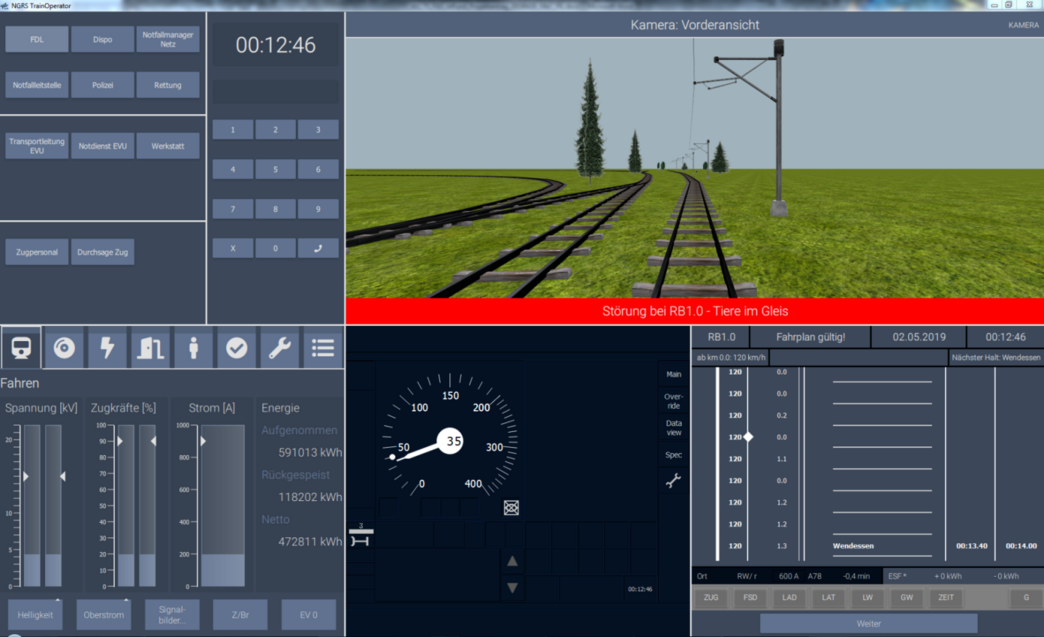
Digital only: Key technologies for automated rail transport
A train usually consists of multiple carriages or wagons. If these have their own propulsion system, they are referred to as railcars. Today, the individual components of a train are often still connected with mechanical couplings. These transmit tractive and compressive forces during acceleration and braking. A large number of different mechanical coupling systems are used around the world, some of which are semiautomatic, others fully automatic. In freight transport, the individual wagons are often coupled or uncoupled manually, which is very labour intensive and time consuming. This is why efforts are currently underway across Europe to convert to Digital Automatic Coupling (DAC). This system will automatically connect freight wagons and their power, data and compressed air lines.
The real metal coupling is replaced by a virtual coupling based on data.
DLR researchers are already looking a little further into the future, examining the use of new communications technologies and standardssuch as 5G mobile, and innovative localisation methods. With the ‘virtually coupled train’ concept, the individual parts of the train could travel close together. They are no longer mechanically connected, but are linked digitally. The real metal coupling is replaced by a virtual coupling based on data. In this way, wagons and trains can connect independently to form longer units and then separate again, if necessary, all while in motion. To ensure that this works safely and reliably, the distance between the units must be constantly calculated and, if necessary, corrected. This all has to happen digitally and automatically, of course. “Virtual coupling systems can make rail operations much more flexible and efficient. Shorter distances between trains or train components can also increase transport capacity,” says Holger Dittus of the Vehicle Energy Concepts Department at the DLR Institute of Vehicle Concepts. “On high-speed routes, intermediate stops can be served by a single part of the train without the main train having to stop. This allows trains to make better use of maximum speeds on existing routes.”
Ensuring accurate localisation and secure and fast communication between trains or train components is both the key technological prerequisite and the greatest challenge in using virtual coupling. Both require solutions that are independent of the rail infrastructure and work at high speeds. They also have to have built-in redundancy in order to ensure safe operation even if a part of the system fails. Global satellite navigation systems and radar and lidar sensors use radio waves or laser beams to measure position, distance and speed. The DLR Institute of Communications and Navigation is also investigating and testing the use of magnetic field signatures. A lot of metal is built into railway infrastructure – tracks, powerlines, bridges, cables and reinforced concrete walls. This affects the magnetic field; it interferes with a magnetic compass. The level of interference varies from place to place.
“This is what we use to determine information about position, track and speed. This method also works very well in tunnels,” says Andreas Lehner from the Institute of Communications and Navigation. Mobile radio technology can be used for communication between trains or train components. A high level of reliability, security, and low latency are also important. Latency is the physically induced delay in the transmission of data. With the latest 5G standard, this latency is less than one millisecond. In light of this, DLR has developed technology including a new type of radio module that transmits radio waves in the millimetre range – a frequency range that is set to see greater use in future mobile communications with the advent of 5G and 6G. Initial studies have shown that stable and secure communication can be established up to a distance of approximately 130 metres.
Smart freight wagons and inter-modal cargo terminals
Freight transport is currently dominatedby ‘block trains’. These transport a large, uniform amount of freight, such as cars or containers. Single wagonload freight, in which a freight train consists of wagons with cargo from different clients, is associated with complex processes and rigid operating procedures. Some 30 to 40 percent of the costs are incurred just in connecting and separating the train components. Numerous manual coupling processes are involved, resulting in long downtimes; the average speed of single wagonload freight traffic in Germany is just 18 kilometres per hour. As a result, rail is not particularly attractive for the growth sectors of courier express parcel services, food and general freight transport. A team made up of researchers from several DLR institutes is looking to change all that. They are working on a future-oriented concept for rail freight transport as part of the large Next-Generation Train (NGT) project. This comprises a railcar train, the NGT Cargo, and a new type of freight yard, the Next-Generation Station (NGS) Logistics Terminal.

The goal of NGT Cargo is to shorten transport times, be more flexible and punctual, and reduce costs. The researchers want to achieve this by giving the train concept a modular design wherever possible and providing a separate, uninterruptible power supply for all the individual wagons. “This serves as the basis for any form of automation and is essential for reliable data communication and the digitalisation of many on-board functions,” says David Krüger of the DLR Institute of Vehicle Concepts.
The Next-Generation Train (NGT) project
The Next-Generation Train (NGT) project
These DLR institutes and facilities conduct research in the field of rail transport at the NGT:
- Institute of Aerodynamics and Flow Technology
- Institute for Structures and Structural Technology
- Institute for Data Science
- Institute of Vehicle Concepts Institute of Composite Structures and Adaptronics
- Institute for Communication and Navigation
- Institute of Aerospace Medicine
- Institute for Material Physics in Space
- Institute for Software Technology
- Institute for System Dynamics and Control Engineering
- Institute of Systems Engineering for Future Mobility
- Institute for Transportation Research
- Institute for Transportation Systems Engineering
- Institute for Materials Research
The automated NGT cargo trains will be composed of individual wagons and high-performance power cars that can be automatically coupled as required. The train set stays together for as long as the logistics require, after which the routes of the individual wagons are separated again. “Each smart freight wagon knows its destination and receives updates from the traffic control centre if necessary. It has its own propulsion system based on electric motors and a battery that stores the energy recovered during braking. This means that the individual wagons can manoeuvre independently, eliminating the need for extra personnel and shunting locomotives or overhead lines,” says Krüger, describing the concept. The individual wagons will also be able to travel the last few kilometres to their respective customers independently and will be equipped with sensors for this purpose. This will allow their location to be determined at any time and customers will receive precise information on the current status and expected arrival time of their freight.
The NGS Logistics Terminal will be equipped for this type of train traffic and form the interface between NGT Cargo and local freight traffic. Intermodal freight stations will link rail with road or airspace at logistically advantageous junctions. Autonomous trucks, cargo bikes or, for particularly urgent goods, drones will then cover the ‘last mile’ to the destination. The main components of the Logistics Terminal will be rack storage systems that are positioned alongside the railway wagons. Goods are pre-sorted here and temporarily stored directly beside the track. The pre-sorting, loading and unloading processes will happen automatically via stacker cranes, elevators and retractable floors.
"Machine learning and artificial intelligence enable a whole new dimension – predictive maintenance."
Dr. Jörn Groos, DLR Institute of Transportation Systems Engineering
Germany’s rail network is around 38,000 kilometres long. Besides the tracks themselves, signalling systems, points and overhead lines also have to be checked and maintained on a regular basis. This is done using measurement vehicles and conducting inspections with appropriate measurement devices. Such complex and labour-intensive procedures are necessary in order to detect damage, replace components as a precautionary measure and determine the condition of the railway infrastructure. “Machine learning and artificial intelligence enable a whole new dimension – predictive maintenance. This means that the rail system operators receive forecasts of how materials or components will perform under the given conditions. This makes it possible to prevent damage, avoid system failures and carry out maintenance in a much more targeted manner,” says Jörn Groos of the DLR Institute of Transportation Systems, describing the possible future scenario.
In order for artificial intelligence to be able to do this, it must first be supplied with large quantities of information and repeatedly trained using examples. Data from sensors and cameras mounted on the trains play an important role in this, as they make it possible to create a digital image of the infrastructure that is as precise as possible. Historical data series and the knowledge and experience of experts are also incorporated into the algorithms and models. DLR scientists are working on systematically collecting information and using data science to transform it in such a way that artificial intelligence can work with it.
Digital analytics can reduce on-site inspections
DLR has already put this technology into practice in the port railway sector. Port railways transport goods within sea and inland ports. They have to be fully operational at all times so that they can be depended upon to process and handle time-critical logistics orders. Together with rail technology company Vossloh Rail Services, the software developer IS Predict and the Braunschweig port operating company, DLR has developed an embedded condition monitoring system and tested it during shunting operations. To do this, the project team equipped a locomotive at Braunschweig harbour with a multi-sensor system consisting of cameras and acceleration and rotation-rate sensors. This equipment delivered high-resolution image data and continuously measured vibrations. From the gathered data, the researchers were able to obtain information about the condition of the track infrastructure and precise location data for each case. Based on the overall dataset, an AI-based analysis method has been developed. The system managers were then able to view the results, in the form of an overview of the current condition of the rails and any damage, via an interactive map. “Such systems can already provide valuable information for the operations management of small industrial railways, which allows personnel to carry out manual inspections in a more targeted and effective manner. In future, the further development of the analysis process will make it possible to reduce the number of manual inspections that require members of staff to be present in the track area,” says Groos.
A holistic outlook for the future
The rail sector consists of futuristic high-speed trains to intercity, regional, local and freight traffic, so it is an exciting yet challenging point of departure for scientific research. At the same time, it holds immense market potential for new technologies and business models. “Rail transport research at DLR draws upon our extensive expertise in almost all of the technologies relevant to the railway sector and combines that knowledge with a comprehensive perspective that takes economic, environmental and societal aspects into account.
This lays the foundation for a successful transfer into the market. Our researchers are internationally sought-after for their skill at optimizing existing systems and designing entirely new concepts, always in close cooperation with industry partners,” says Karsten Lemmer.
Author: Denise Nüssle
This article first appeared in DLRmagazin 169 of the German Aerospace Center.

